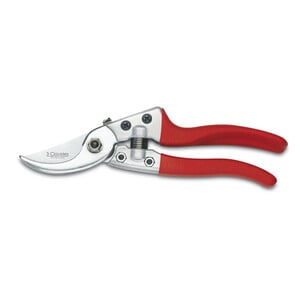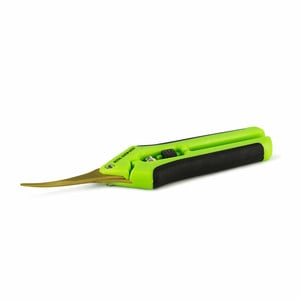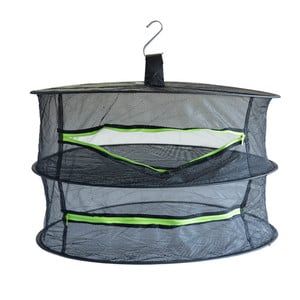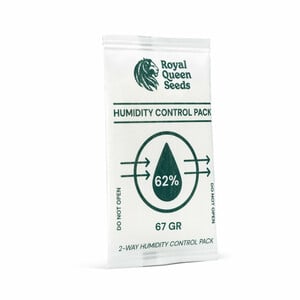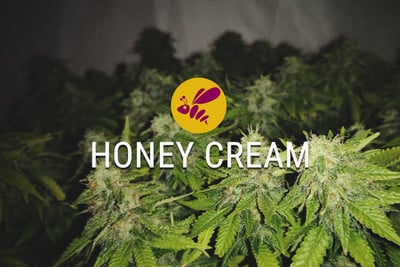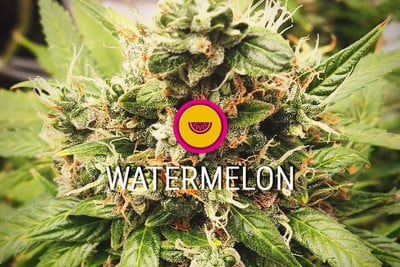.

Croptober: Cannabis Harvest Is Approaching
Croptober is a joyous time of year, especially for cannabis growers! Join us here to learn more about this pivotal period, and get some tips on how to make the very most of it as a cannabis cultivator.
Contents:
- What is croptober?
- Why october? the science behind the timing
- Preparing for harvest: key steps before croptober
- Harvesting tips during croptober
- Post-harvest: drying, curing, and storing
- Tools for managing your croptober with ease
- Plan ahead! follow rqs strain schedules
- Croptober for outdoor vs indoor growers
- Embrace the croptober spirit
Summer is gone and winter is fast approaching. What does this mean? Possibly that it’s time to harvest your weed! If you’ve been growing outdoors, chances are that October is when you’ll harvest it, so your trials and tribulations are almost at an end! What's more, by this time of year your previous supply of dried bud might be running low.
In this article, we’re exploring Croptober from the perspective of a weed cultivator, and giving you some tips on how to make the very most of this exciting and bountiful time of year.
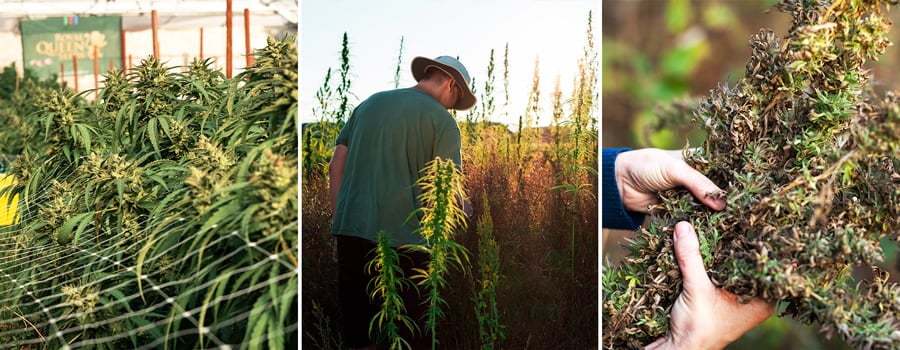
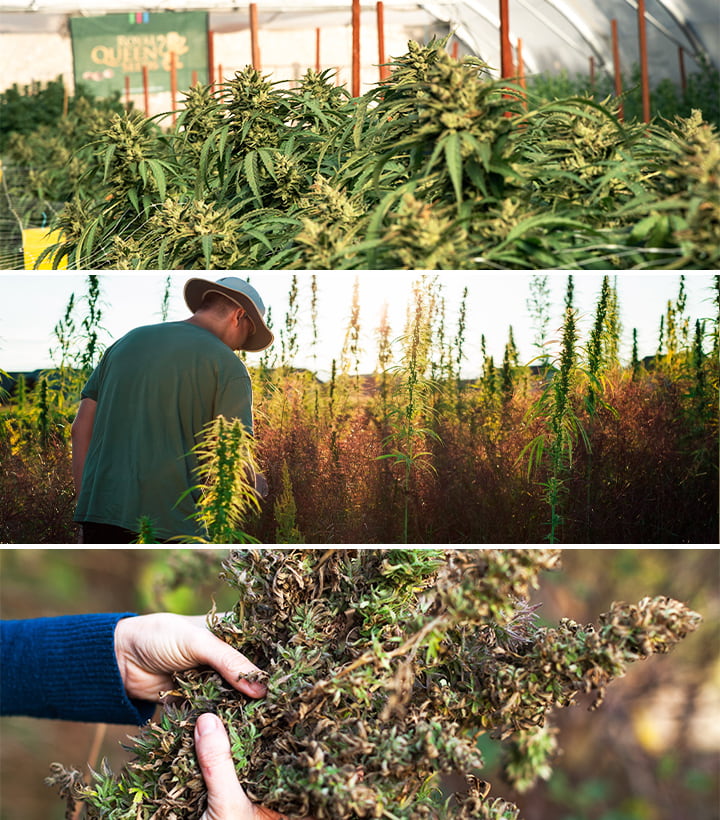
What Is Croptober?
Croptober is the name designated by cannabis growers for the time of year that outdoor growers harvest their weed! Most photoperiod strains that grow outdoors will reach peak maturity in October, so it is during this month that people start cutting down their monstrous plants, after months of care, and start the drying and curing process.
Of course, if you’re growing indoors or cultivating autos, then Croptober may be irrelevant to you. But if you’ve stuck to nature’s schedule, then you’ll be bringing in your crop at the same time that many farmers are bringing in most of the year’s harvest. Who knows, perhaps you could head out to a harvest festival with a hamper full of fresh bud?
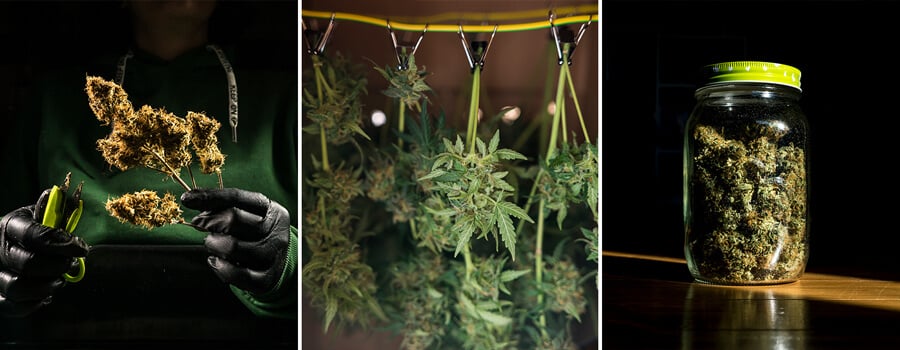
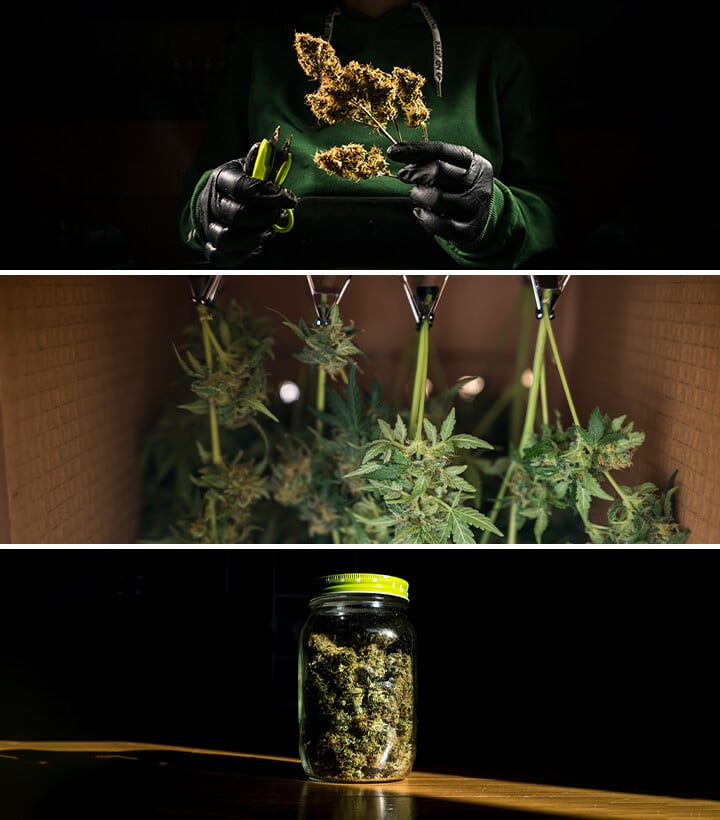
Why October? The Science Behind the Timing
Now, Croptober is biased towards the Northern Hemisphere, as weed grown south of the equator is likely to be harvested in April—Cropril? But sticking to the north for now, the reason most plants reach maturity at this time of year is due to the changing of the seasons. Over the summer months, plants absorb the sun’s powerful rays and develop flowers and seeds, the latter of which they seek to disperse before the cold weather and rain kill them.
So as the days shorten, cannabis plants go into overdrive creating flowers in the hope of getting pollinated. If you can keep them unpollinated, then they just keep growing bigger flowers until the season comes to an end—at which point you'll need to harvest them else they’ll reach a natural death. Leave them too long and the quality of the buds will deteriorate.
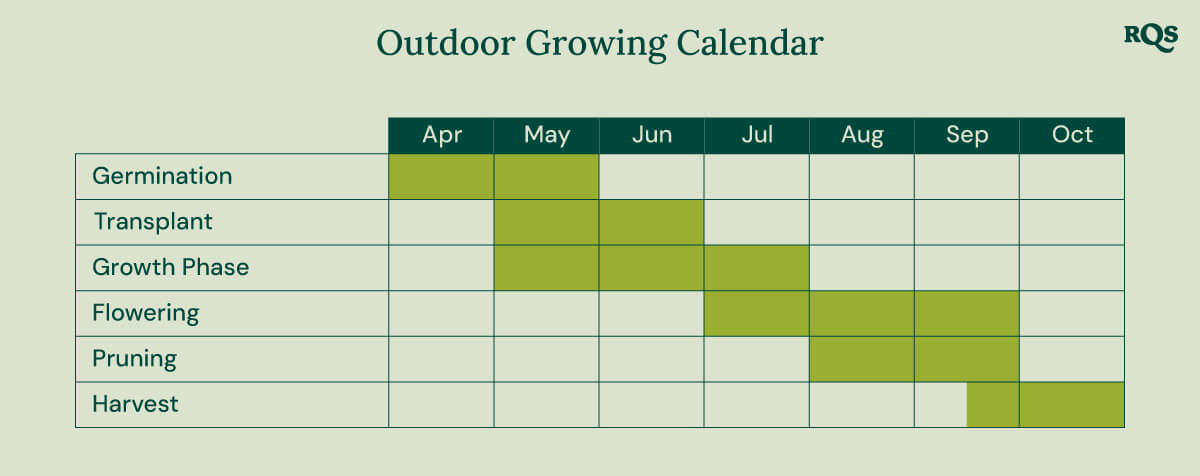
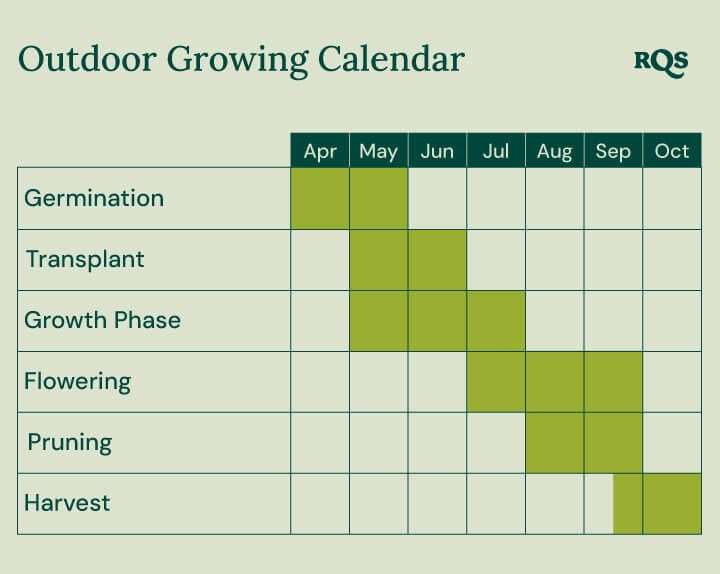
Preparing for Harvest: Key Steps Before Croptober
Before Croptober arrives, there are several important steps growers need to take to ensure a successful harvest:
- Nutrients: As plants progress toward their final stages, you’ll want to tweak their food so it’s low in nitrogen and rich in phosphorus and potassium. This will help them grow large and potent flowers, meaning that Croptober will be a time for celebration! As an additional step, some growers will also flush their plants before harvesting them. The theory goes that administering pure water to the substrate during the couple weeks leading up to harvest causes plants to use up nutrient reserves (stored as salts), potentially improving the flavor and quality of the final product.
- Pistils and trichomes: Before you reach for the shears just because October’s rolled around, you need to check if your plant is actually ready to harvest. There are two main visual cues to look out for. If over 90% of the pistils are red-brown, it’s likely time to harvest. To be absolutely sure, however, use a magnifying glass or jeweller's loupe to inspect the trichomes on the flowers. If 70% are milky white, with the remaining 30% being clear or amber, then it’s the optimal time to harvest!
- Watch for dangers: As the season cools off and gets wetter, the risk of mold and rot destroying your big, juicy flowers becomes increasingly real. So keep a very careful eye on your plants and, if unwelcome growth is spotted, harvest immediately.
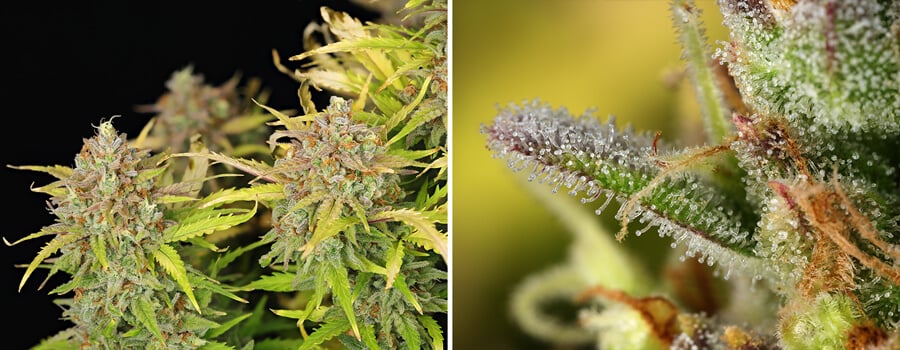
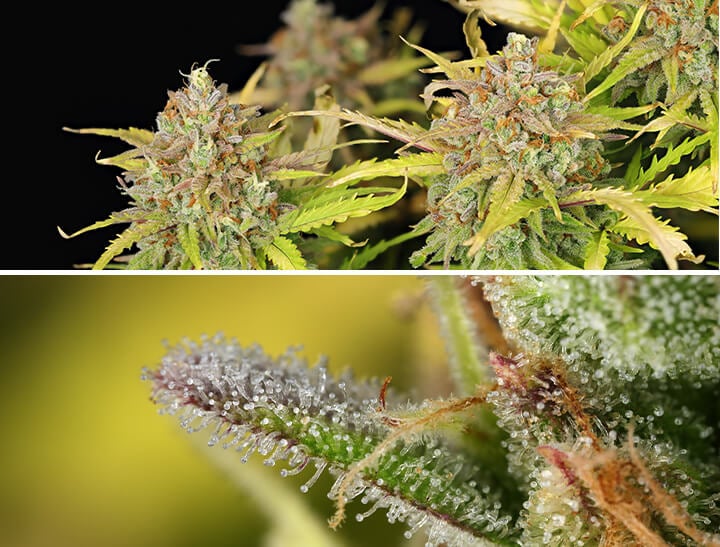
Harvesting Tips During Croptober
Before harvesting, you need to make a few key decisions. These concern the harvesting itself, as well as post-harvest processing.
If you’re interested in moon cycles, you might want to know that there are key dates in the October lunar calendar. The waxing moon will pull the most resin into your flowers, while the full moon is the preferred day to harvest your plants. If moon cycles aren’t your thing, then just go off the plant’s trichomes.
You’ll also want to consider how and where you’re going to dry your bud. You don’t want to harvest and then realize you don’t know what to do next! So set up a drying space and have it all ready to receive your crop!
What’s more, decide whether you'll opt for wet or dry trimming. Wet trimming, in which buds are trimmed right after harvesting, hastens the drying process and reduces the chance of mold, but it can be challenging with very sticky buds. Dry trimming is easier, but it comes with a slightly increased risk of mold and prolongs the drying process.
Post-Harvest: Drying, Curing, and Storing
To dry your buds, you’ll want to hang them in a dark room at room temperature (around 21ºC). Ideally, the humidity will be below 50% to reduce the chance of mold, but not too low, as this could cause the buds to dry out too much, which will adversely affect their quality when you come to consume them.
After drying, it’s technically possible to use your buds. And maybe you’ll want to sample a little after months of anticipation. However, we’d suggest curing most of your stash for at least a further two to four weeks (if not eight!) in airtight glass jars. Curing helps to refine the quality and flavor of a crop, and after putting in so much effort, why not take this final step?
Once you’ve cured your buds, you can store them in the same airtight stash jars, adding suitable humidity packs to preserve quality as long as possible. Oxygen, light, and moisture are the enemies of stored weed, so keep it sealed!
Tools for Managing Your Croptober With Ease
To get the very most out of your harvest, a suitable toolkit can make the difference! Whilst the following list is not essential, it will make Croptober even more satisfying than it’s already going to be!
- Bio Flowering Booster: These nutrients are tailored for the final few weeks of flowering, and will help to get your plant over the line and ensure you have the biggest, strongest buds possible!
- Microscope for smartphones: Taking cues from your plant’s trichomes is the most accurate way to discern when to harvest. So consider buying yourself a microscope attachment for your smartphone so you can truly see what’s going on. Not only will this help you know when to harvest, but it will allow you to take some very cool pictures as well.
- Professional pruning shears: If you’ve got fat outdoor plants, you might need something equally powerful to get through that main stem. Buy a pair of professional pruning shears if you’ve got a monster to bring down!
- Curved trimming scissors: Trimming, especially if you’ve got a big haul, can be surprisingly time-consuming and fiddly. Curved trimming scissors will make your life much easier and will also make your bud look top-quality.
- Herb dryer: To make drying faster and safer, consider using a herb dryer rather than hanging your bud to dry. These devices reduce the chance of mold and will optimally dry your flowers for the best possible feel and flavor.
- Weed jars: Specially designed curing jars will make this final stage more efficient and will maximise the flavor and quality of your weed.
- Humidity packs: These packs can help with the curing process, reducing the chance of mold and optimising the environment within your jars so that your weed cures as well as possible.
Plan Ahead! Follow RQS Strain Schedules
If you’re growing strains from respected seed banks, then you’ll have some idea of when they’ll be ready for harvest before you even plant the seeds! So there’s no excuse not to plan ahead. One word of caution, though: the dates and timelines provided on brand packaging or websites are simply a guide, not a hard rule. Ultimately, you should harvest when your plants “tell” you they’re ready.
We suggest using a grow planner from the moment you plant your seeds to keep track of everything from nutrients and training to pests and other plant problems. Then, next year, you can look back on this knowledge and improve your subsequent harvests!
Below, find some rough harvest estimations for our strains.
-
Early Croptober Harvest
These strains are likely to mature in late September or early October.
- Watermelon: 7 weeks of flowering
- Royal Cheese: 7–8 weeks of flowering
- Honey Cream: 7–8 weeks of flowering
- O.G. Kush: 8–9 weeks of flowering
- Cookies Gelato: 8–9 weeks of flowering
- Royal Cookies: 8–9 weeks of flowering
- Royal AK: 8–9 weeks of flowering
- Pink Gorilla: 8–9 weeks of flowering
-
Mid-Croptober
These strains are likely to be ready to harvest in mid-October.
- Royal Runtz: 8–9 weeks of flowering
- Sherbet Queen: 8–10 weeks of flowering
- Royal Gorilla: 8–10 weeks of flowering
- Cereal Milk: 8–10 weeks of flowering
- Biscotti: 8–10 weeks of flowering
- Mimosa: 9–10 weeks of flowering
-
Late Croptober
The following strains should be mature at the end of October or the beginning of November.
- AMG: 10 weeks of flowering
- Shogun: 9–11 weeks of flowering
- Chocolate Haze: 9–11 weeks of flowering
- Shining Silver Haze: 10–11 weeks of flowering
- Amnesia Haze: 10–11 weeks of flowering
Ver esta publicación en Instagram
Croptober for Outdoor vs Indoor Growers
Croptober is an outdoor grower-only event. That’s not to say that indoor grows can’t finish in October too, but it’s not a requisite. Though outdoor growers get to enjoy the spoils and hype of the Croptober period, they also have to battle with seasonal changes, and the pests, disease, and adverse weather they bring.
Croptober is a final challenge before you blaze your way through the winter—until it’s time to plant more seeds the following spring!
Embrace the Croptober Spirit
Croptober is a time to harvest the psychoactive fruits of your labor! If you’ve been patiently tending to your cannabis garden during the spring and summer, this time of year can be extremely rewarding, so treat yourself! And why not share your journey on social media (if it’s safe to do so), so the word spreads and the cannabis community can share a collective sigh of relief at this pivotal time of year?


























